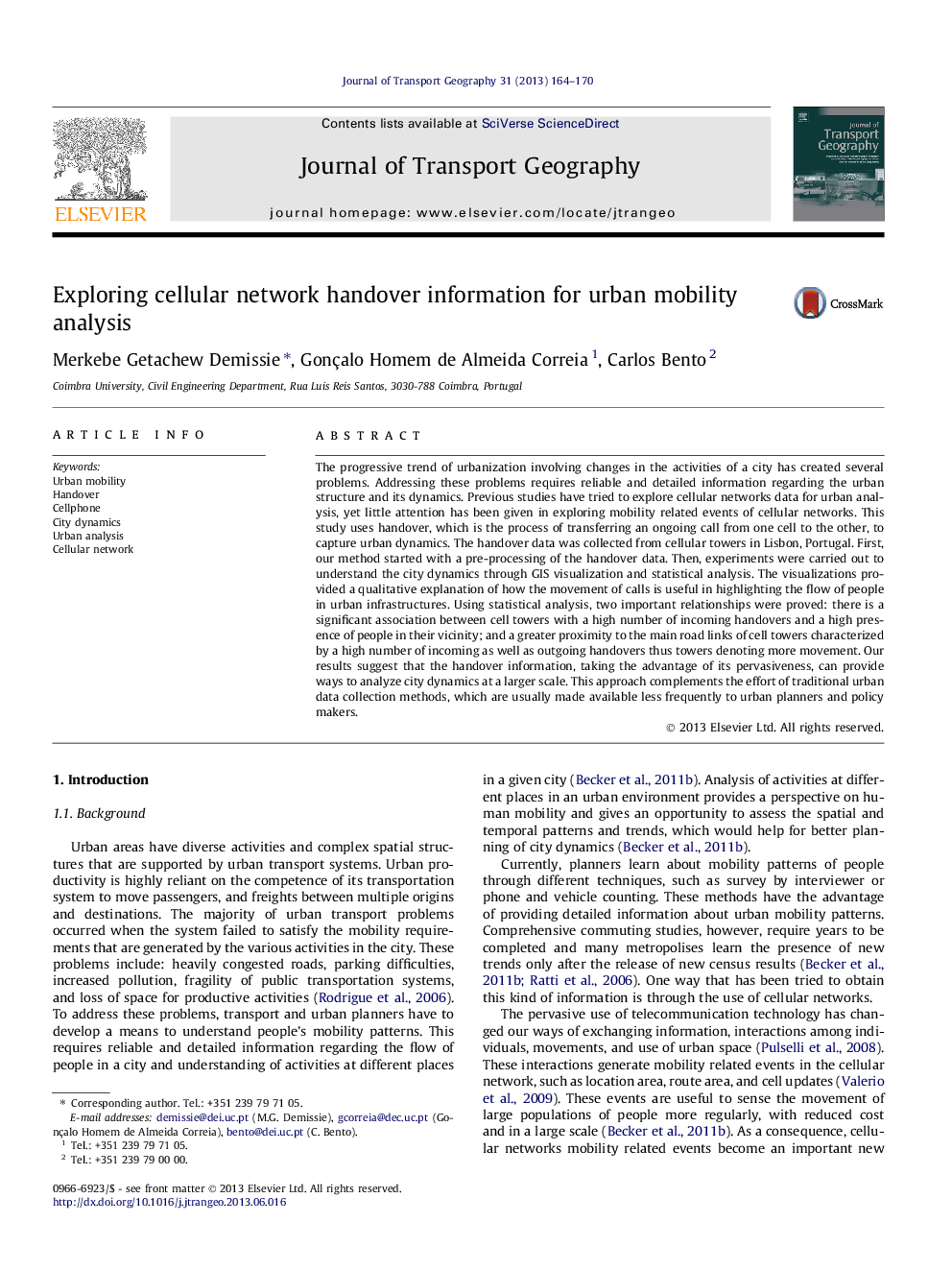| Article ID | Journal | Published Year | Pages | File Type |
|---|---|---|---|---|
| 7486431 | Journal of Transport Geography | 2013 | 7 Pages |
Abstract
The progressive trend of urbanization involving changes in the activities of a city has created several problems. Addressing these problems requires reliable and detailed information regarding the urban structure and its dynamics. Previous studies have tried to explore cellular networks data for urban analysis, yet little attention has been given in exploring mobility related events of cellular networks. This study uses handover, which is the process of transferring an ongoing call from one cell to the other, to capture urban dynamics. The handover data was collected from cellular towers in Lisbon, Portugal. First, our method started with a pre-processing of the handover data. Then, experiments were carried out to understand the city dynamics through GIS visualization and statistical analysis. The visualizations provided a qualitative explanation of how the movement of calls is useful in highlighting the flow of people in urban infrastructures. Using statistical analysis, two important relationships were proved: there is a significant association between cell towers with a high number of incoming handovers and a high presence of people in their vicinity; and a greater proximity to the main road links of cell towers characterized by a high number of incoming as well as outgoing handovers thus towers denoting more movement. Our results suggest that the handover information, taking the advantage of its pervasiveness, can provide ways to analyze city dynamics at a larger scale. This approach complements the effort of traditional urban data collection methods, which are usually made available less frequently to urban planners and policy makers.
Related Topics
Life Sciences
Environmental Science
Environmental Science (General)
Authors
Merkebe Getachew Demissie, Gonçalo Homem de Almeida Correia, Carlos Bento,
